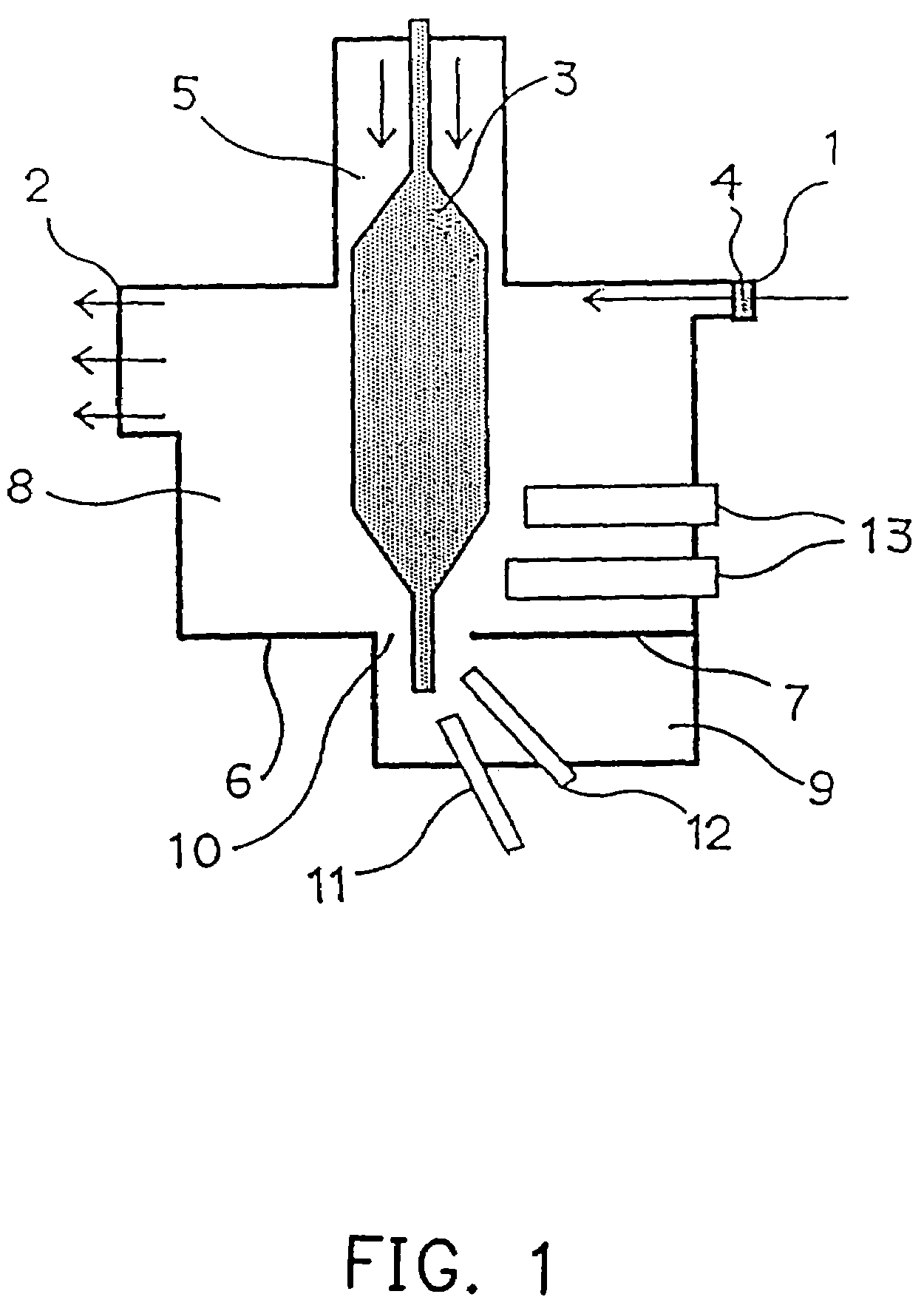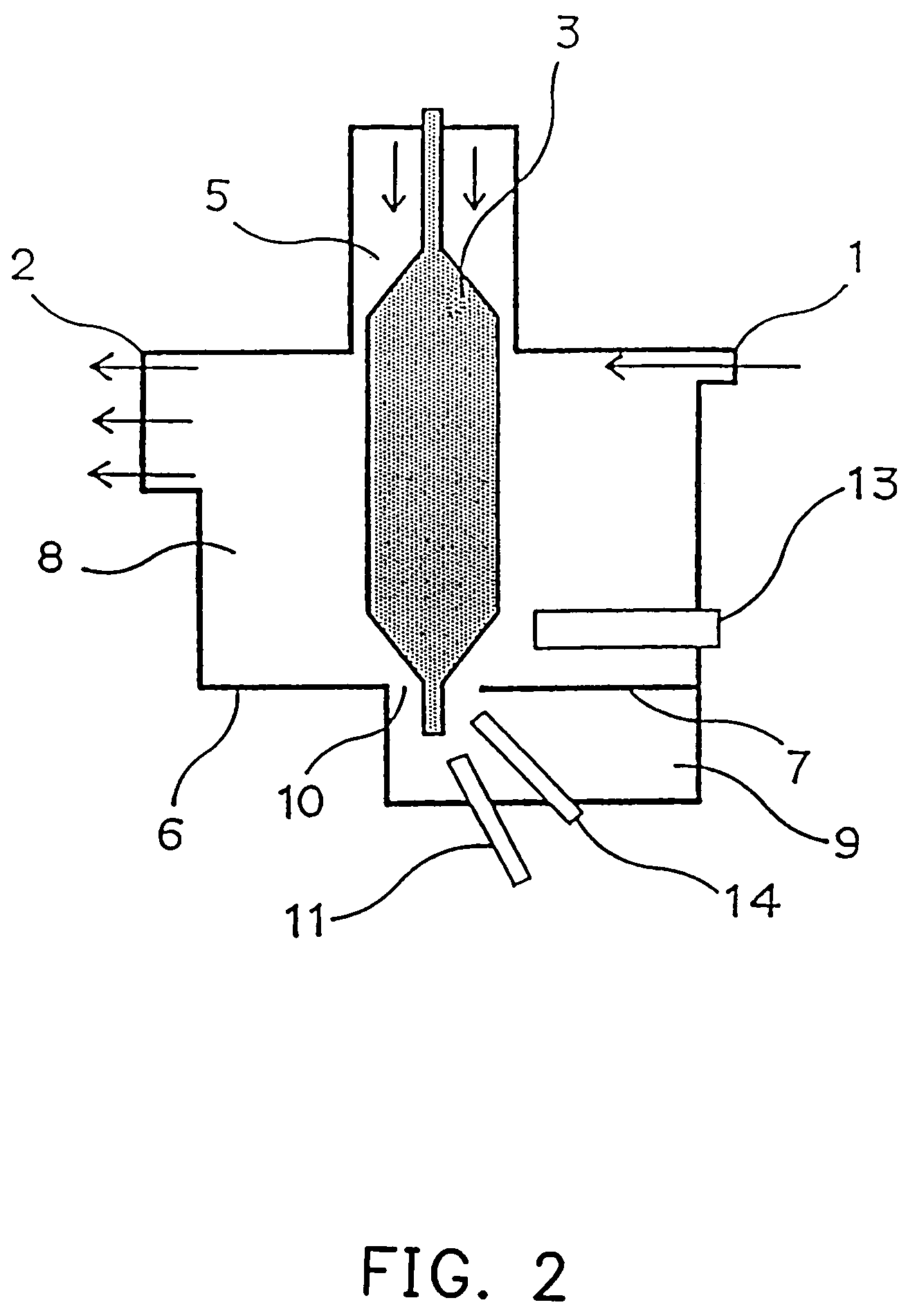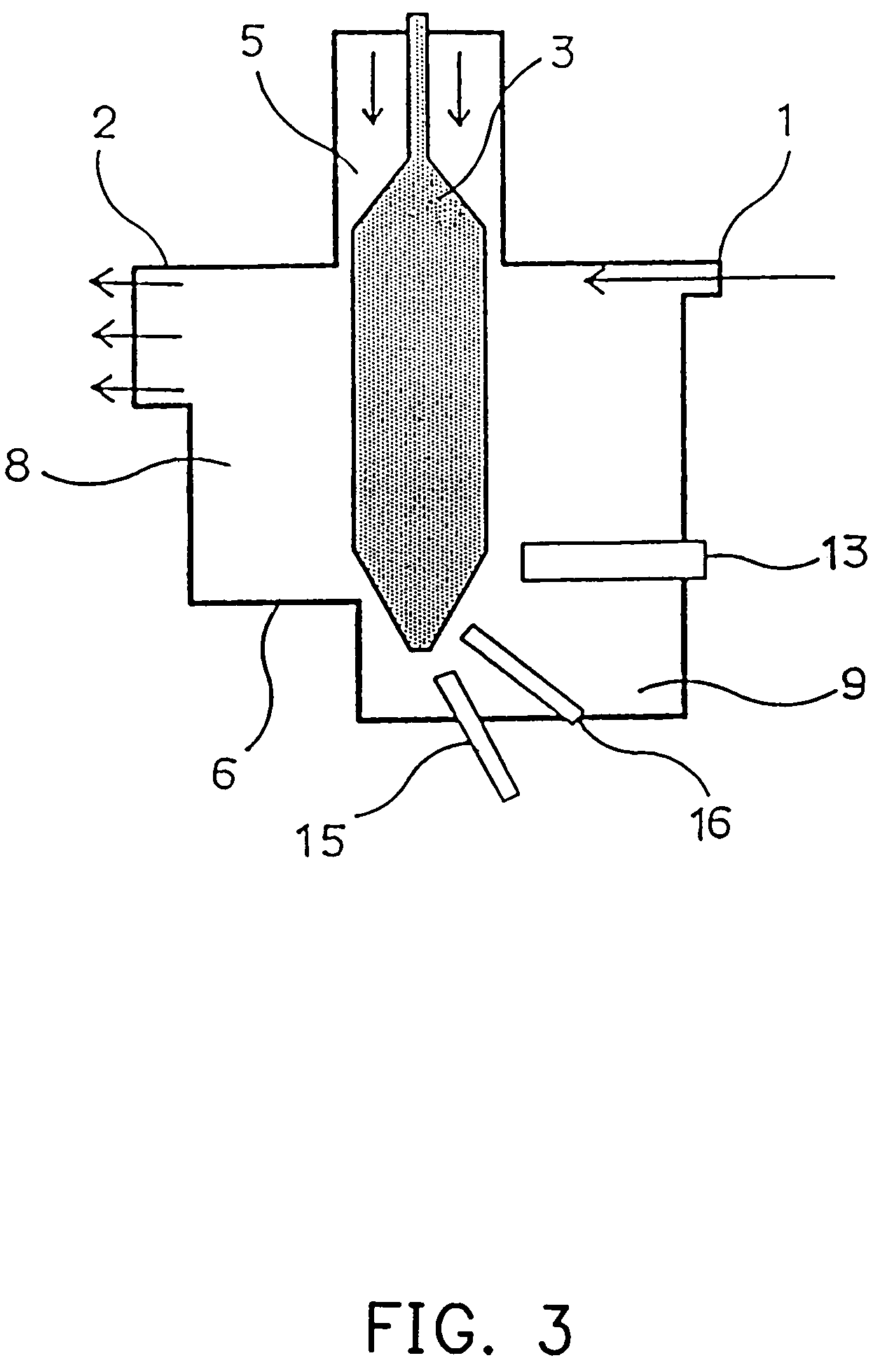Apparatus for fabricating soot preform for optical fiber
a technology of optical fiber and soot preform, which is applied in the direction of glass deposition burners, instruments, furniture, etc., can solve the problems of apparatus being difficult to clean, eroded upper room, and apparatus being more difficult to clean, so as to reduce bubbles and impurities, increase the exhausting efficiency of glass particles, and stable optical characteristics
- Summary
- Abstract
- Description
- Claims
- Application Information
AI Technical Summary
Benefits of technology
Problems solved by technology
Method used
Image
Examples
embodiments
>
[0065]The manufacture apparatus as shown in FIG. 1 is designed to manufacture porous soot preforms by VAD method, and it comprises: a reaction furnace including a cylindrical upper room 5 having a radius of 130 mm provided on top of a substantially cubic reaction chamber, which has sides of about 500 mm, and being so designed that the center of the ceiling of the reaction chamber is coincidental with the center line of the cylindrical upper room 5; and a rotary shaft (not shown), whose rotation axis is coincidental with the central axis of the upper room 5, and which is capable of freely moving vertically. As shown schematically in FIG. 1, a gas-supplying inlet 1, a slit of 480 mm in length and 15 mm in width, is made in a vertical wall having burners 13 equipped thereon, at a location 5 mm beneath a ceiling of the reaction chamber, and a gas-exhausting outlet 2, 480 mm in length and 200 mm in width, is made in a wall opposite the gas-supplying inlet 1, at a location 5 mm beneath t...
PUM
| Property | Measurement | Unit |
|---|---|---|
| velocity | aaaaa | aaaaa |
| velocity | aaaaa | aaaaa |
| velocity | aaaaa | aaaaa |
Abstract
Description
Claims
Application Information
 Login to View More
Login to View More - R&D
- Intellectual Property
- Life Sciences
- Materials
- Tech Scout
- Unparalleled Data Quality
- Higher Quality Content
- 60% Fewer Hallucinations
Browse by: Latest US Patents, China's latest patents, Technical Efficacy Thesaurus, Application Domain, Technology Topic, Popular Technical Reports.
© 2025 PatSnap. All rights reserved.Legal|Privacy policy|Modern Slavery Act Transparency Statement|Sitemap|About US| Contact US: help@patsnap.com



